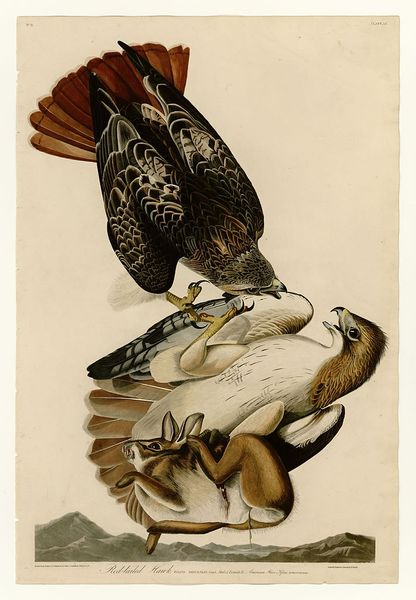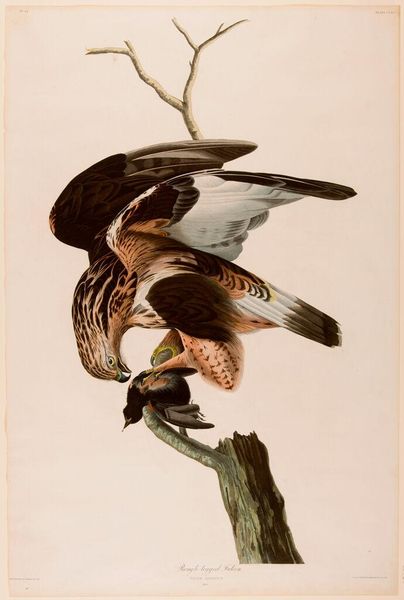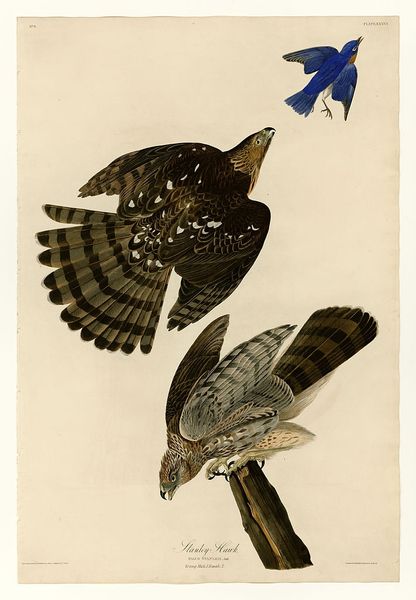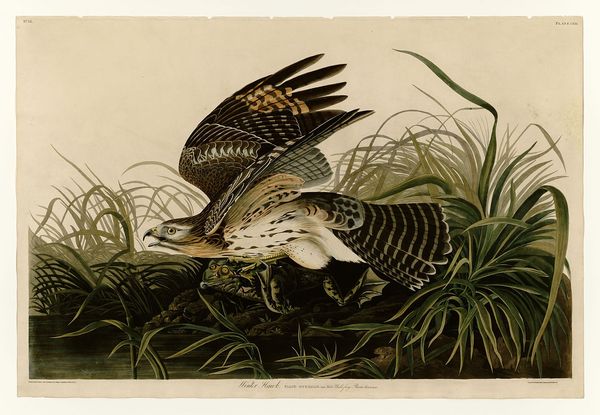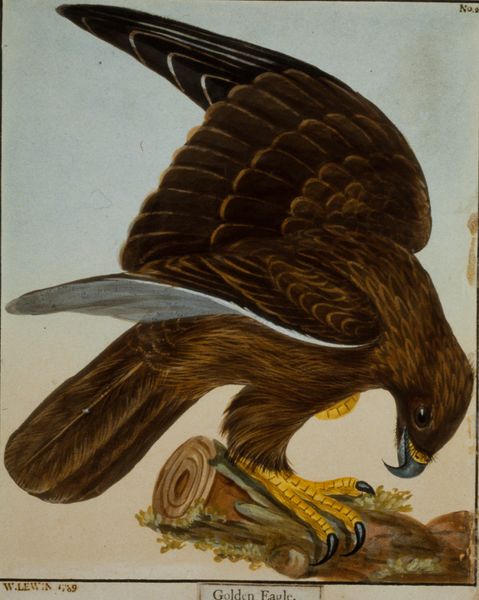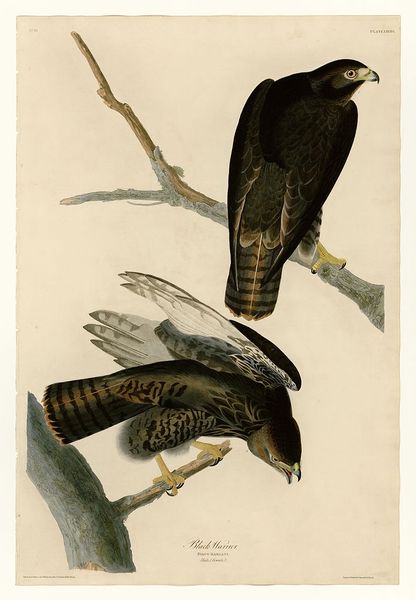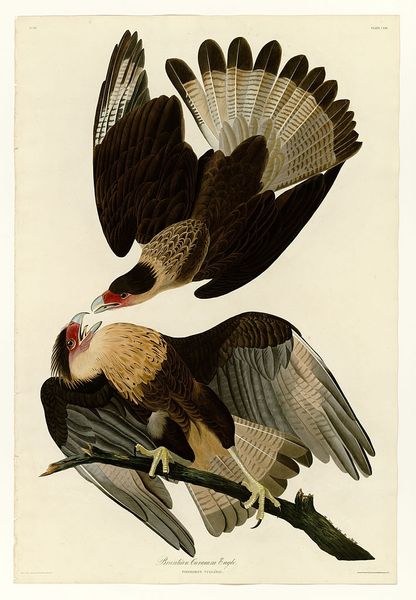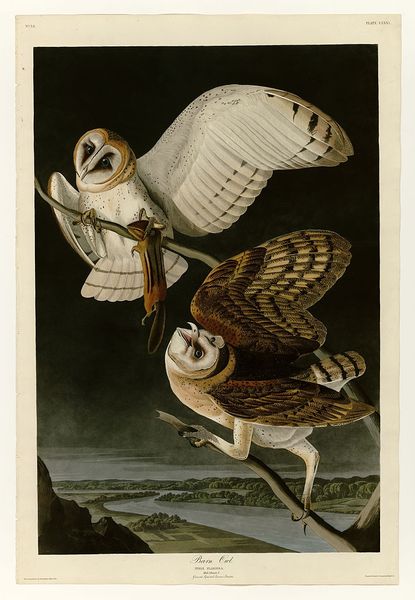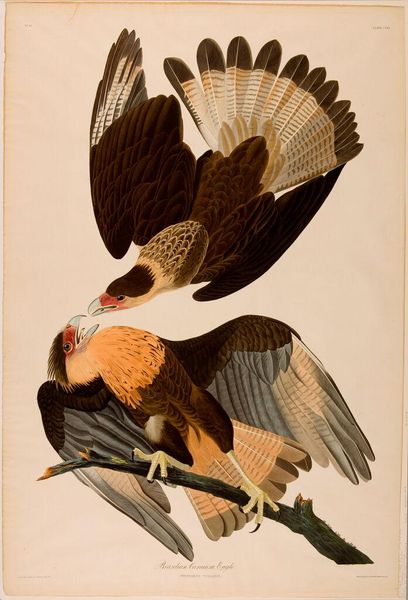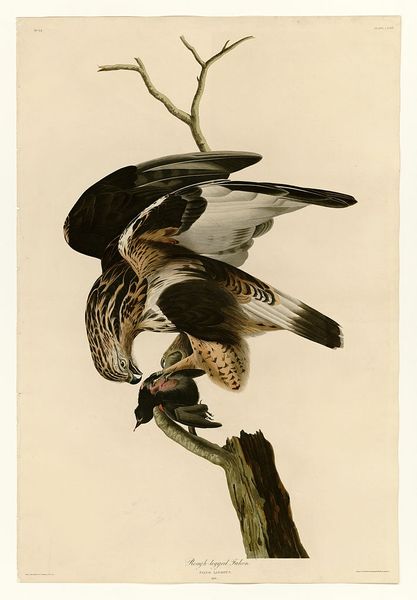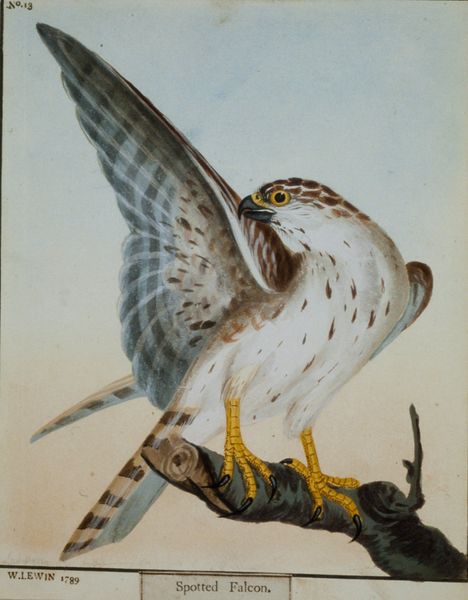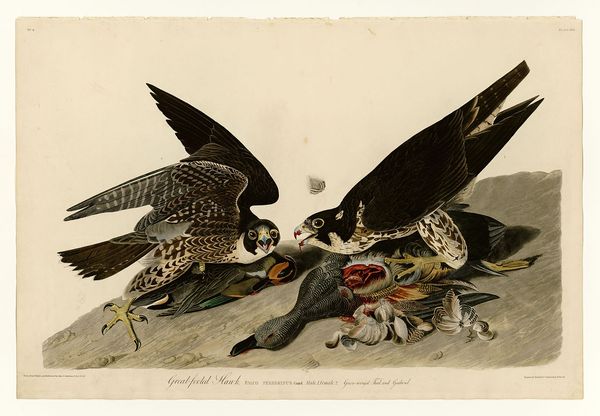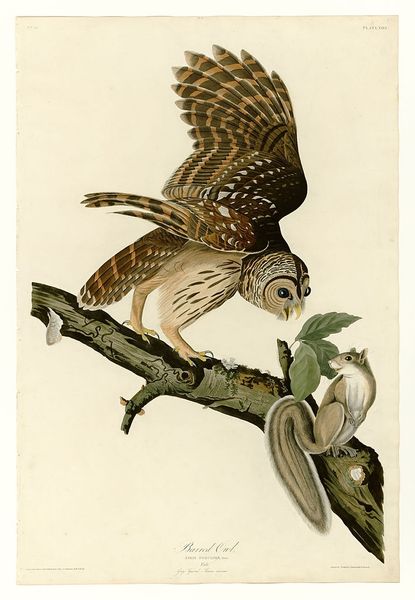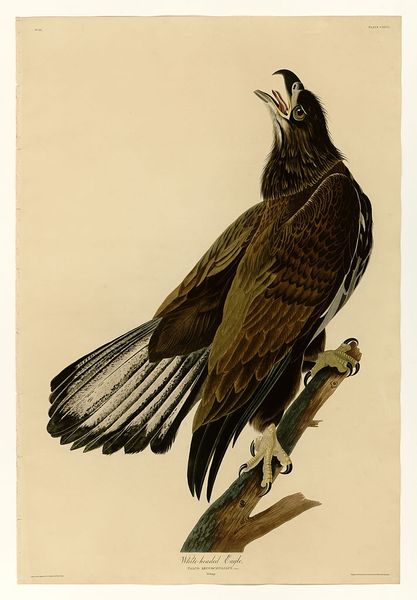
painting, watercolor
#
animal
#
painting
#
impressionism
#
landscape
#
bird
#
watercolor
#
muted green
#
watercolour illustration
#
realism
Copyright: Public domain
Curator: What a striking image! The immediacy is almost startling. Editor: Indeed. Here we have John James Audubon's "Plate 81 Fish Hawk or Osprey", a watercolor illustration rendered in a style reminiscent of both realism and impressionism. The composition is quite dynamic, isn't it? Curator: Absolutely. The raw materiality of the act, of predator and prey, is laid bare. The texture rendered through the watercolor makes the scene quite vivid. I'm immediately drawn to how the osprey's talons clutch the fish, the grip almost brutal. Editor: Notice also the contrast in textures—the feathery softness of the bird versus the scaled, slippery surface of the fish. This interplay adds another layer to our interpretation. It asks us to consider how different species interact within the natural world and how Audubon captures the material specificities that enable the power dynamics between them. Curator: Precisely. And the negative space surrounding the bird enhances its imposing figure. There's a kind of tension achieved through this positioning—the bird suspended mid-air. Semiotically, it signifies power, dominance, the cycle of nature… a true visual statement! Editor: It also feels like the material reality speaks of control and domination. The question is, who or what dominates whom? On one level, of course, we understand the domination of the Osprey as a natural act. On another, we have the domination of nature that the consumption of it invites. I keep wondering, though, about the material act of capturing the bird. Audubon killed them. What does the dead bird mean for the viewer, then? Curator: Well, these artistic depictions offered some form of engagement with wildlife, even if removed from its pure form. The rendering of wings and feather alignment does deliver an authentic likeness. Editor: Still, Audubon's process seems quite exploitative in a lot of ways, creating a stark contrast when positioned with current artistic explorations that deal with natural degradation and regeneration via digital technology, upcycling of raw materials and community based arts interventions. Curator: Certainly, one can see it that way. Well, examining these juxtapositions certainly enriches the experience, enabling a multilayered understanding of what one encounters! Editor: I agree completely! It's always amazing what looking closely at material and practice reveals.
Comments
No comments
Be the first to comment and join the conversation on the ultimate creative platform.
